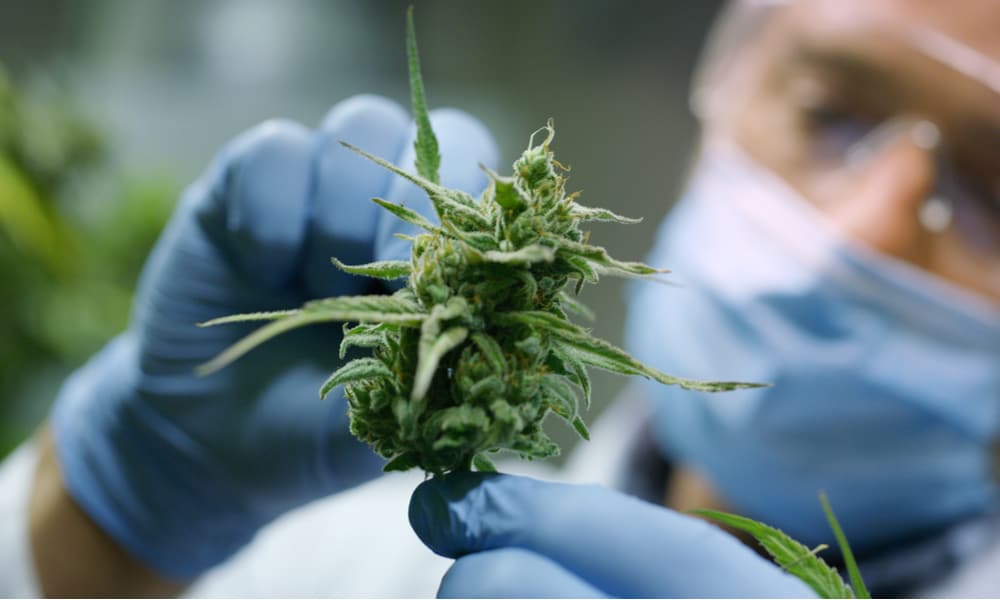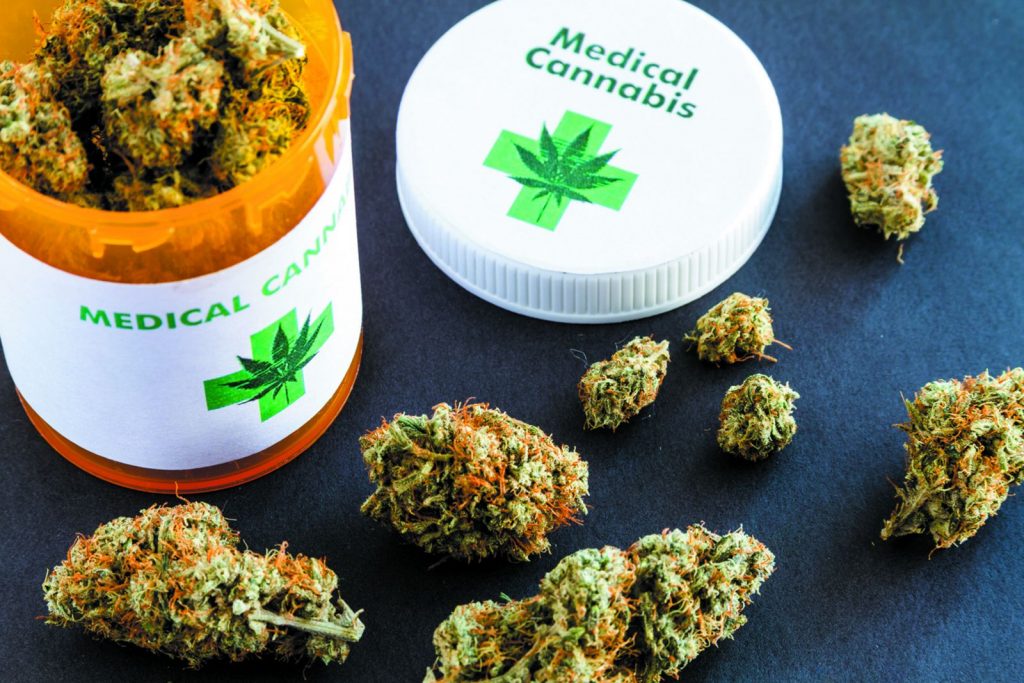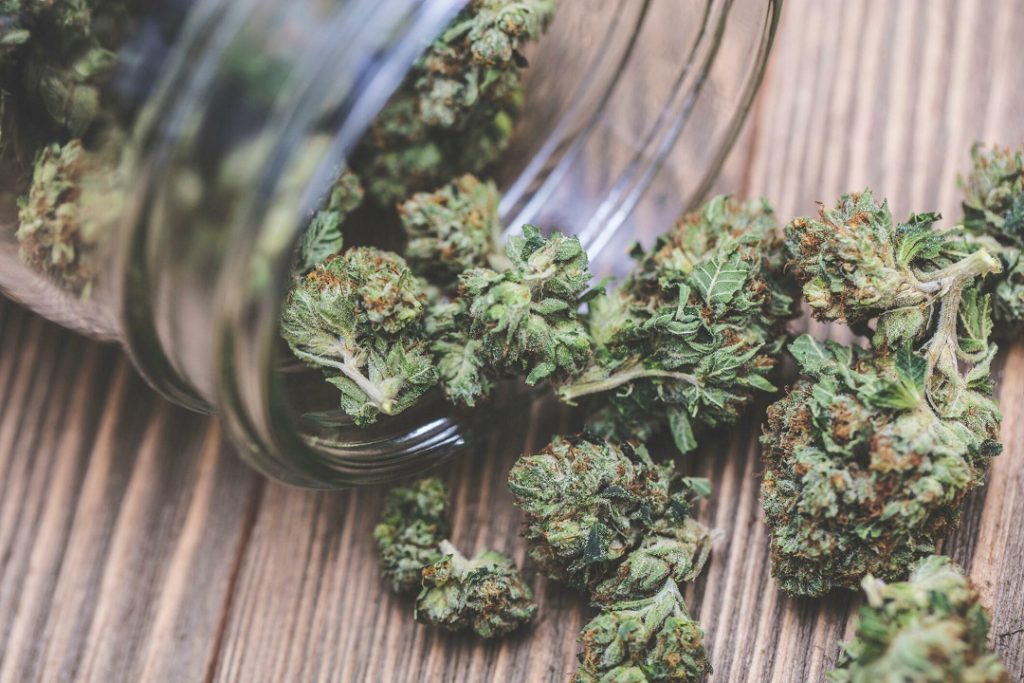Scientists Find Cannabis Compound More Effective Than Aspirin for Pain Relief
Despite the hundreds of compounds Cannabis sativa plants produce, just two cannabinoids—THC and CBD—have dominated discussions about the medicinal and therapeutic properties of cannabis. And for good reason. THCA and CBDA, the inactive acidic forms of THC and CBD, are the most abundant chemicals produced by cannabis plants, making them both the most commercially viable and the easiest to research. Studies that investigate the potential medical applications of these cannabinoids continue to link their versatile therapeutic effectiveness to their ability to reduce inflammation throughout the body. But the reality is that THC and CBD aren’t the only compounds with anti-inflammatory properties.
In fact, they may not even be the most potent pain-relievers cannabis has to offer. That honor might actually belong to a different family of cannabis compounds altogether: flavonoids. You may have heard of flavonoids before if you’ve ever looked into the health benefits of certain “superfoods.” Several studies have shown how plant flavonoids offer humans (and other animals) antioxidant, anticancer and neuroprotective properties.
But identifying the health benefits of of cannabis flavonoids is only part of the equation. The other part is figuring out to make medicines with them. And the fact that flavonoids exist in such low quantities in cannabis plants makes that next step particularly hard. Thanks to an exciting recent breakthrough, however, researchers have figured out how cannabis plants produce those pain-killing compounds, which means drug manufacturers are one step closer to developing what could be the safest and most effective pain relief medicines in history.
Meet Cannflavin A and Cannflavin B: Pot’s Most Potent Painkillers?
In addition to THC, CBD, and other major cannabinoids, cannabis plants produce a plethora of specialized chemicals researchers believe contribute to the plant’s astonishing array of medical and therapeutic uses. Of those chemicals, one group in particular appears to produce substantial anti-inflammatory effects in animals. Scientists call that group “flavonoids.”
Flavonoids exist in virtually every plant. But in 1981, researchers discovered two flavonoids that are specific to Cannabis sativa. Their names are cannflavin A and cannflavin B, and they immediately prompted a wave of interest among plant researchers. In a 1985 study, researchers found that cannflavins A and B provided anti-inflammatory benefits that were approximately thirty times more effective than aspirin. That’s right, thirty times more effective than one of the most common over-the-counter pain relievers.
Nearly two decades later, in 2014, researchers published a study explaining that better-than-aspirin effectiveness. They found that cannflavins A and B worked to block the production of two chemicals that promote inflammation in animal cells. But despite these important findings, almost no one was paying attention to how Cannabis sativa actually synthesized these non-psychoactive cannflavins. Except, that is, for a team of researchers with the University of Guelph in Canada.
Research Breakthrough Could Revolutionize Pain Relief Medications
Now that barriers to cannabis research are falling in the wake of expanding legalization, researchers are more able than ever to explore the vast unknowns of Cannabis sativa. Compared to our understanding of other plants and their medicinal properties, our knowledge of cannabis is seriously behind. For decades, researchers have been studying the benefits of flavonoids and how different plants produce them. But we’re only now beginning to understand the unique and complex metabolic pathways that give cannabis such pharmacological potential.
And one of the most important recent breakthroughs in that field of research is the elucidation of the biosynthetic pathway for cannflavin A and B. In other words, researchers finally had a chance to figure out how cannabis plants make these more-potent-than-aspirin compounds. And they did exactly that.
Next, of course, they filed a patent. And after that, medical cannabis company Anahit International licensed the patent to begin exploring how to produce commercial pain relief products with cannflavins A and B. Such medicines could completely transform the way we treat pain. “What’s interesting about the molecules in cannabis is that they actually stop inflammation at the source,” said Tariq Akhtar, Assistant Professor of Molecular and Cellular Biology at the University of Guelph and co-author of the study that discovered how cannabis plants produce cannflavins A and B. “And most natural products don’t have the toxicity that’s associated with over-the-counter pain relief drugs.”
Cannabis: Better than Aspirin, Safer than Aspirin
Amid the ongoing devastation of the opioid crisis, finding a viable alternative pain medication without the risks and deleterious side effects of many prescription pain medications is an urgent challenge facing the healthcare industry. But even over-the-counter pain medications like aspirin, ibuprofen, and acetaminophen, when used daily or in combination with alcohol, can lead to kidney disease and stomach and liver problems. Cannflavins, as far as we know, don’t damage organs; rather, they treat inflammation at the source. And based on the available research, they do it safer and more effectively than aspirin.





